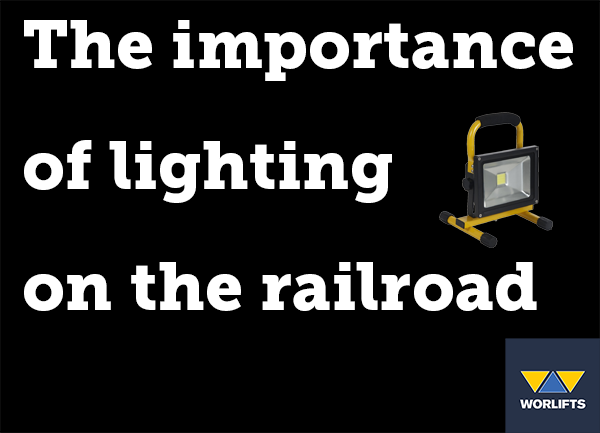The importance of effective (and bright) site lighting when working near the railroad

One of the most important aspects of working near a railroad safely involves the use of good site lighting - workers cannot be expected to work in conditions that do not at least replicate daylight - if they did, work carried out may be of a poor quality and put people at unnecessary risk.
Railroad workers often work into the night, or during off-peak times. During the summer this is less of a problem with regard to lighting, due to the longer days, but in autumn and winter it gets dark earlier and railroad workers must use artificial site lighting.
If working in a tunnel, then site lighting is an obvious essential requirement.
Workers working near a railroad must have a good level of lighting at all times, for working near a railroad carries a high level of risk - in 2013, there were more than ten catastrophic incidents that occurred globally on railroads, such as the incident on July 6th in Lac-Mégantic, Quebec, and in the UK a number of people were killed on railroads due to a lack of signage.
Types of Site Lighting
There are a number of types of site lighting workers can use when working near the railroad.
110V fluorescent fittings are an ideal solution for overhangs, while 110V and 230V floodlights are ideal for lighting large areas with a 360-degree impact. 110V task and portable lights can also be used by workers that need to travel between sites, while hand lamps and headlamps are an ideal solutions for workers who need extra light directly ahead whilst working.
In all cases, site lighting is designed to benefit workers to increase productivity and improve safety.
Considerations
It's important to consider that there are minimum lighting regulations. For the movement of people, machines, and vehicles, the minimum brightness in Lux must be 5. In hazardous areas, that rises to 20 Lux. The minimum brightness for brick laying and carpet laying is 100 Lux while for viewing site plans, carrying out fine detail electrical work and plastering the minimum brightness in Lux is 200.
The HSE say “Employees are required to have arrangements in place to cover Health & Safety. This includes lighting which needs to be suitable and adequate to meet the requirements of the work place.” – (Health, Safety & Welfare) Regulations 1992.